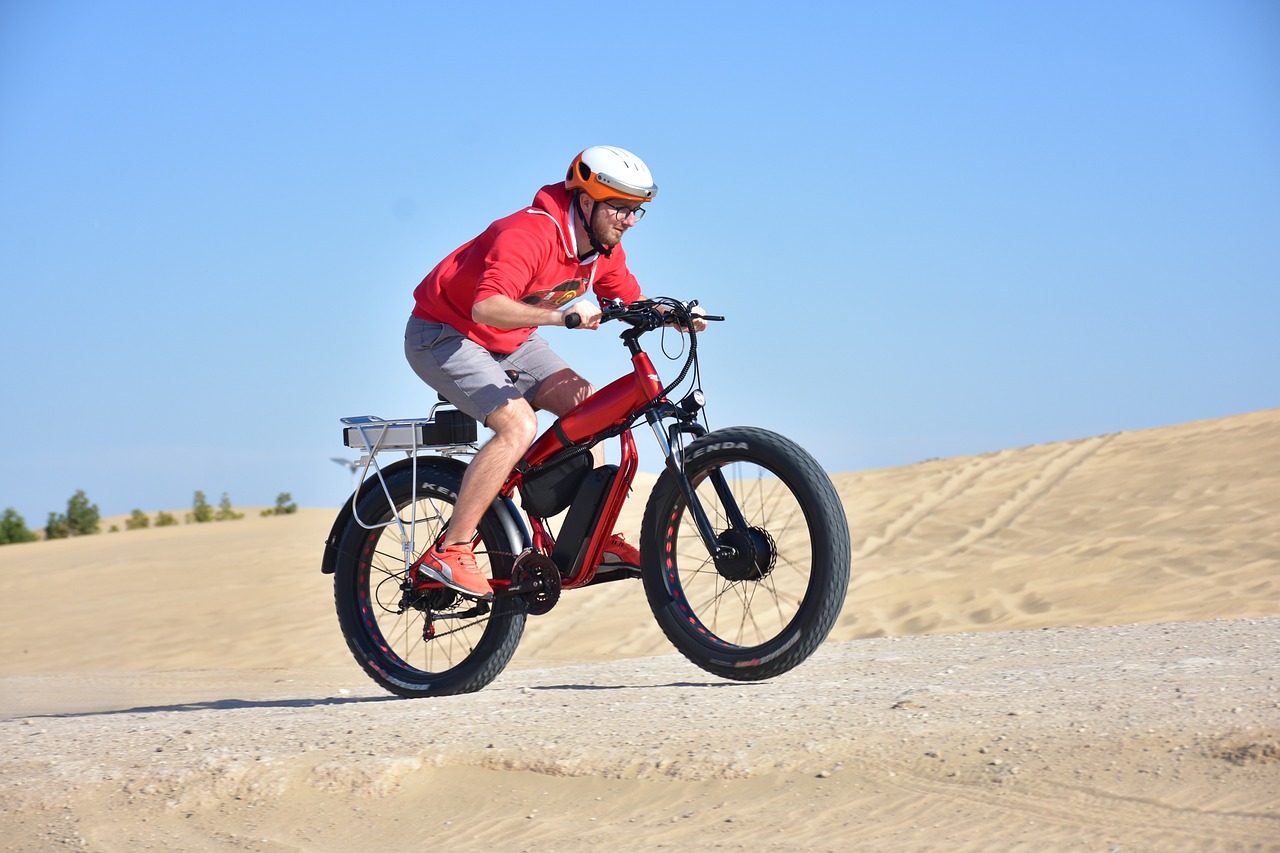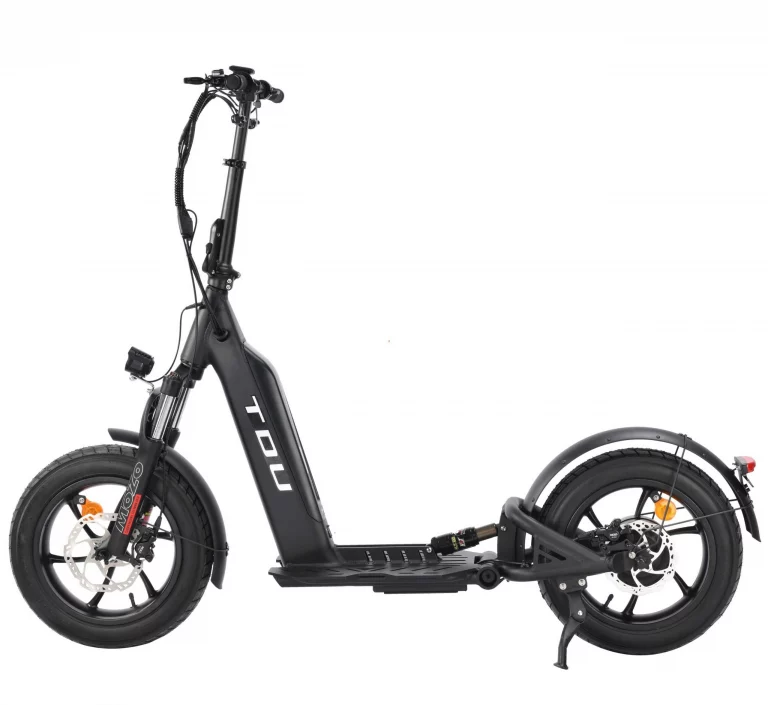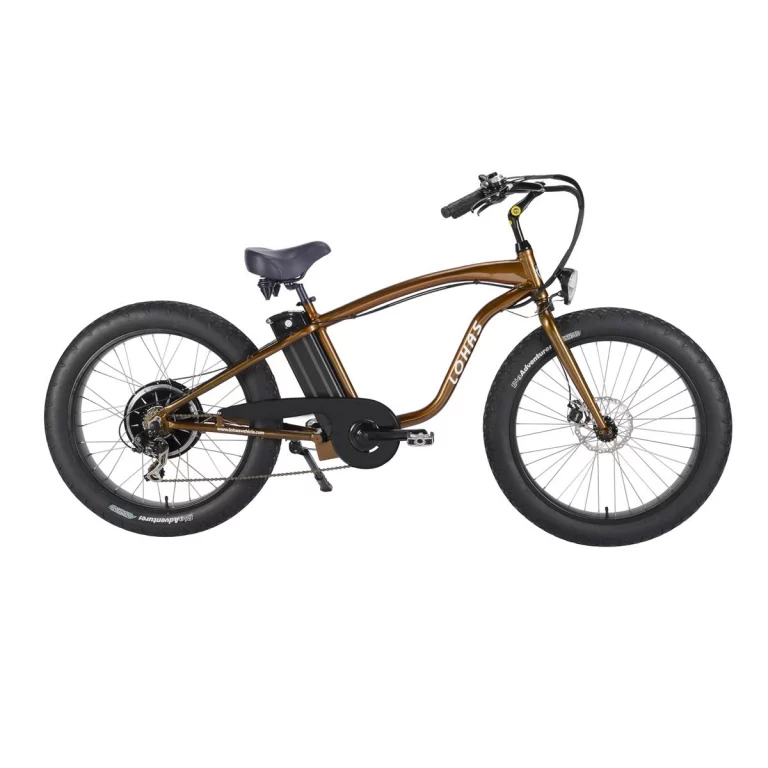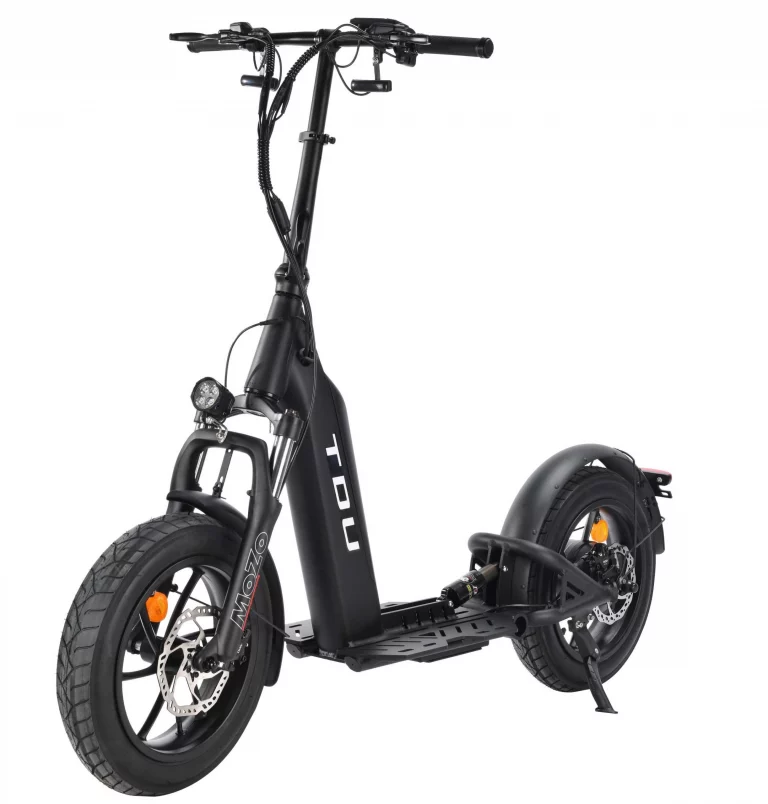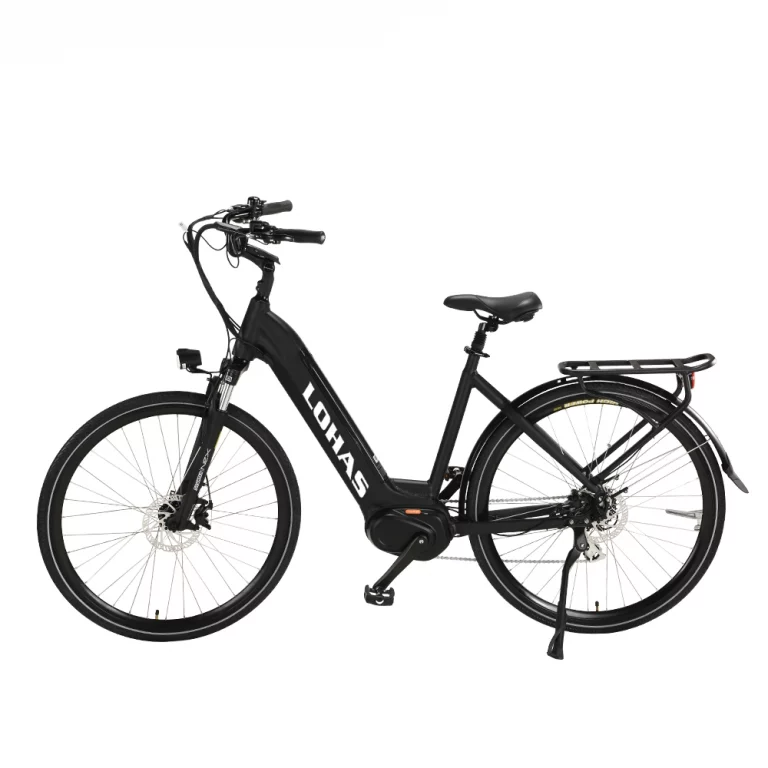Electric bikes, commonly referred to as eBikes, have revolutionized the way we think about commuting, exercise, and even leisure. As the popularity of eBikes continues to soar, one of the most frequently asked questions is: How fast can you go on an ebike? This article explores the elements influencing eBike speeds, legal speed limits, and factors that affect how fast one can travel on an electric bike.
Yongkang LOHAS Vehicle Co., Ltd covers an area of more than 18,000 square meters. We have two assemble line, and use advanced manufacturing equipment and techniques to produce high-quality electric scooters and electric bike that meet our strict standards. At the heart of our company is a dedicated R&D team comprising 20 professionals who contribute to e-bike design and innovation. To ensure the highest standards, our Quality Inspection team, consisting of 15 meticulous individuals, thoroughly check e-bike and e-scooter before shipment.
Exploring the Basics of eBike Speed
What Determines eBike Speed?
The potential speed of an eBike depends on several key components. Primarily, the motor’s power, expressed in watts, plays a significant role. Most eBikes come equipped with motors ranging from 250 to 750 watts. A higher wattage motor generally means more power and potential higher speeds. Additionally, the specifications of the battery, particularly the voltage and ampere-hour ratings, impact the duration an eBike can sustain high speeds.
Another crucial determinant is the type of assistance provided. Pedal-assist models, for instance, augment the rider’s pedaling power, while throttle-based systems allow users to propel the bike forward without pedaling. The type of terrain and tire quality can also influence speed capabilities. Smooth, flat terrains with high-quality, low-resistance tires will facilitate higher speeds compared to rugged terrains with knobby tires.
The Importance of Motor Power and Battery Life
Motor power and battery life are directly linked to an eBike‘s speed and endurance. If you frequently travel long distances or navigate hilly terrains, a powerful motor and a high-capacity battery are essential. Typically, a 500-watt motor paired with a 48-volt battery will provide a balance of speed and range suitable for most riders.
The efficiency of the battery also impacts speed, especially over long distances. As the battery depletes, the motor receives less power, resulting in reduced speeds. Using high-quality batteries and ensuring they are well-maintained can help mitigate these issues. Caring for the battery by following the manufacturer’s charging guidelines and avoiding complete discharges can sustain optimal performance.
Factors Influencing Actual Riding Speed
Terrain and Weather Conditions
The speed an eBike can achieve in real-world conditions is heavily influenced by the terrain and weather. Flat and smooth surfaces allow for higher speeds, often reaching the maximum potential speed of the eBike. However, when riding uphill or on rugged trails, speed is naturally reduced. E-Bikes equipped with powerful motors may perform better in such conditions, but they will still experience some reduction in speed.
Weather conditions also play a pivotal role. Riding against strong headwinds can drastically decrease your speed, whereas tailwinds might help you achieve higher speeds without much strain. Rain and wet conditions necessitate slower speeds due to decreased traction and increased stopping distances. Properly adjusting your riding style to these variables will enhance safety and performance.
Rider’s Weight and Physical Effort
The weight of the rider is another critical factor influencing eBike speed. More weight means the motor has to work harder to achieve and maintain higher speeds. For instance, a heavier rider might notice a slight reduction in top speed and increased battery consumption. To minimize this, riders can consider weight distribution and aerodynamics.
Additionally, the level of physical effort exerted by the rider can impact speed. In pedal-assist mode, the more effort the rider puts in, the higher the speed the motor can assist with. Maintaining a steady and consistent pedaling rhythm helps optimize battery use and speed. Even in throttle modes, periodic pedaling can help alleviate strain on the motor and increase the duration of high-speed travel.
Navigating these factors efficiently ensures that riders can achieve the optimal speed on their eBikes while maintaining a balance between performance and battery life.
Common Speed Ranges for Different Types of eBikes
City Commuter eBikes
City commuter eBikes are designed with urban travel in mind, providing a moderate speed suitable for navigating city streets. Typically, these eBikes feature motors in the range of 250 to 500 watts, enabling speeds up to 20 mph. The emphasis is on efficiency and ease of use rather than extreme speed. Designed to handle stop-and-go traffic, city commuter eBikes often feature robust braking systems and ergonomic designs to offer comfort during longer rides.
Daily commuters benefit from city eBikes’ moderate speeds, which align with urban speed limits and ensure safe travel through crowded areas. Additionally, these eBikes are often built with features like integrated lights, fenders, and racks, making them practical for carrying groceries or briefcases. Their balanced approach to speed and utility establishes them as a reliable option for city dwellers.
Mountain and Off-Road eBikes
Mountain and off-road eBikes are engineered for rugged terrain and steep inclines, boasting powerful motors ranging from 500 to 750 watts or more. These bikes are designed to handle the diverse challenges of off-road cycling, including dirt trails, rocky paths, and steep hills. On flat terrains, mountain eBikes can reach speeds up to 28 mph, though speed is naturally reduced on more challenging terrains.
These eBikes prioritize durability and stability, often featuring suspension systems to absorb shocks and wider tires for better traction. The versatility of mountain eBikes makes them ideal for adventurers seeking both speed and rugged performance. Riders must remain cautious on uneven terrains where high speeds can lead to loss of control and potential accidents.
Typical Speed Capabilities on Various Terrains
Terrain significantly influences the speed of mountain and off-road eBikes. On smooth, flat trails, these eBikes can approach their upper speed limits of 25 to 28 mph. However, on steep inclines or rocky surfaces, speed often decreases to 10-15 mph. Efficient use of the motor’s assistance modes can help maintain an optimal speed across varying conditions.
In muddy or slippery conditions, speeds could reduce further to ensure safety and control. Riders should adopt a cautious approach, using the bike’s capabilities to strike a balance between maintaining momentum and ensuring stability. The advanced suspension systems help mitigate the impact of rough terrains, enabling a smoother ride even at lower speeds.
High-Performance Sport eBikes
High-performance sport eBikes are built for speed enthusiasts and competitive riders. These eBikes often feature powerful motors exceeding 750 watts and high-capacity batteries designed for sustained high-speed travel. On ideal conditions, sport eBikes can exceed 30 mph, providing a thrilling ride for those seeking speed and excitement.
These eBikes are equipped with high-end components, including advanced braking systems and aerodynamic designs to handle high speeds safely. Riders should be mindful of speed limits and their own safety, as riding at such high speeds can increase the risk of accidents. Proper protective gear and adherence to traffic laws are essential when operating high-performance eBikes.
Enhancing Your eBike’s Performance Safely
Regular Maintenance Tips
Routine maintenance ensures your eBike performs optimally and safely. Start with regular checks of the tire pressure and tread, as under-inflated or worn-out tires can significantly impact speed and stability. Keep the drive chain clean and lubricated to minimize resistance and wear. Regularly inspect the brake system to ensure it provides reliable stopping power, especially at higher speeds.
Battery maintenance is also crucial; avoid overcharging and exposing the battery to extreme temperatures. Clean electrical contacts to ensure efficient power transfer. Software updates for eBikes with advanced features can enhance performance, so staying informed about the latest updates is beneficial. Engaging in preventive maintenance rather than reactive repairs helps sustain the bike’s efficiency and longevity.
Upgrading Components Responsibly
When considering upgrades, prioritize components that safely enhance performance. Motor and battery upgrades can provide a boost in speed and range, but ensure they comply with local regulations. Upgrading to higher-quality tires can improve traction and ride smoothness, while advanced brake systems ensure safe stopping even at higher speeds.
Suspension upgrades enhance comfort and control on rough terrains, and installing ergonomic seats and handlebars can reduce fatigue during long rides. Ensure all upgrades are compatible with your eBike model to avoid performance issues. Consulting with a professional mechanic can provide insights into the best upgrades for your specific needs.
How to Determine the Right Speed for Your Needs
Personal Use Case Scenarios
Selecting the optimum speed depends heavily on your specific needs and riding environments. For urban commuting, city eBikes with speeds up to 20 mph are often sufficient, balancing swiftness and safety in traffic conditions.
Urban Commuting
In urban settings, achieving quick yet safe travel to and from work is the primary goal. City eBikes tailored for commuting offer enough speed to keep pace with traffic while ensuring safety during frequent stops. The integration of practical features like cargo racks and lights supports daily errands alongside commuting tasks.
Leisure and Fitness
For leisure or fitness purposes, eBikes offering a range of speeds are advantageous. Lower speeds can be ideal for scenic rides or relaxed outings, while higher speeds can aid in intense workouts. Sport eBikes suited for fitness enthusiasts provide various assist modes to customize speed and resistance, accommodating different fitness levels.
Competitive Sports
For competitive sport endeavors, high-performance eBikes providing speeds over 30 mph cater to this niche. These bikes are designed for agility and swift acceleration, suitable for racing circuits or extreme off-road challenges. Riders should ensure compliance with event regulations and prioritize safety equipment when riding at such high speeds.
Useful Tips for Riding at Optimal Speeds
Balancing Speed with Safety
Achieving optimal speeds necessitates balancing thrill with safety. Always wear appropriate safety gear, including helmets and protective clothing. Observe traffic laws and be mindful of pedestrian areas where high speeds can pose risks. Avoid overly aggressive riding styles that could compromise control or reactiveness.
In adverse weather conditions, reduce speeds to maintain traction and control. Use lights and reflective gear to enhance visibility during night rides or low-visibility conditions. Regular practice and familiarity with your eBike’s handling at various speeds will contribute to safer rides.
Utilizing Assist Levels Effectively
Most eBikes come with adjustable assist levels, allowing you to regulate the power contribution from the motor. Utilize lower assist levels for flat terrains or when conserving battery life. Higher assist levels can be beneficial for steep inclines or when desiring a boost in speed.
Switching between assist levels as needed helps you maintain a steady pace without overexerting the battery or your energy. Understanding and effectively leveraging assist modes enable efficient and enjoyable rides.
Final Thoughts on eBike Speed and Efficiency
Speed capabilities on eBikes vary widely and are influenced by multiple factors, including motor power, battery life, terrain, and rider effort. While high speeds can enhance the thrill and efficiency of eBiking, it’s crucial to prioritize safety and adhere to local regulations. Regular maintenance and responsible upgrades can optimize performance, ensuring that your eBike remains a reliable and enjoyable mode of transportation. Whether for commuting, leisure, or sport, selecting the right speed and riding style tailored to your needs fosters an optimal balance between efficiency, enjoyment, and safety.
As one of the famous brands in the production of electric bicycles and scooters, Yongkang LOHAS Vehicle Co., Ltd is committed to the research and development and manufacturing of related products. LOHAS Vehicle is a modern integrated enterprise specializing in the design, manufacturing, and distribution of electric bicycles and electric scooters, dedicated to the production of high quality electric bicycles and electric scooters.

